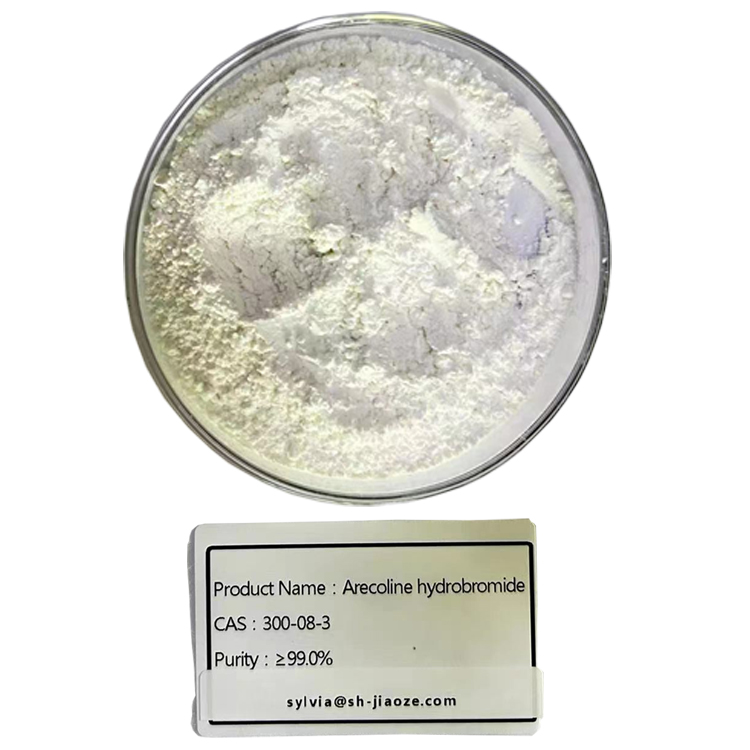
Arecoline hydrobromide (chemical formula: C8H13NO2 · HBr, CAS number: 300-08-3) is an alkaloid mainly extracted from areca nut (Areca catechu). Areca nut is a palm plant widely cultivated in Asia, and its seeds are used as chews and have stimulant effects. Arecoline is one of the main active ingredients of areca nut. Its hydrochloride form, Arecoline hydrobromide, is more commonly used in research because of its better solubility.

1. Introduction of Arecoline hydrobromide 300-08-3
Arecoline hydrobromide is a white or nearly white crystal or crystalline powder, easily soluble in water and ethanol, but difficult to dissolve in ether. Due to its stimulating effect on the nervous system, it is used in medical research as a research tool in neuropharmacology, especially when studying the cholinergic system.
2. Characteristics of Arecoline hydrobromide 300-08-3
1). Cholinergic receptor agonist: Arecoline is a known agonist of cholinergic receptors (especially M1 and M3 types) and can mimic the effects of the neurotransmitter acetylcholine.
2). Nervous system effects: It can affect the nervous system by activating cholinergic receptors, leading to physiological effects such as increased saliva secretion and changes in heart rate.
3). Source of alkaloids: As a natural extract, Arecoline hydrobromide can be used to study the potential effects and mechanisms of areca nut in traditional medicine.
3. Advantages of Arecoline hydrobromide 300-08-3
1). Solubility: Compared with other forms of Arecoline, Arecoline hydrobromide has better solubility in water, which makes it more convenient in experimental operations.
2). High purity: As a chemical reagent, Arecoline hydrobromide usually has high purity, which is beneficial to the accuracy of scientific research experiments.
3). Research value: Due to its effect on the cholinergic system, Arecoline hydrobromide is a valuable tool for studying neurological diseases such as Alzheimer's disease.
4. FAQ
Q: Is Arecoline hydrobromide safe?
A: As a pharmacologically active substance, the safety of Arecoline hydrobromide depends on the dosage and mode of use. In a laboratory environment, safety guidelines should be strictly followed. Long-term or high-dose use may have health risks.
Q: Can Arecoline hydrobromide be used for clinical treatment?
A: Currently, Arecoline hydrobromide is mainly used for scientific research purposes and is not widely used in clinical treatment. Any clinical application requires a strict drug approval process.
Q: What are the main uses of Arecoline hydrobromide?
A: It is mainly used in scientific research, especially in the study of neuropharmacology and cholinergic systems.
Q: What are the potential side effects of Arecoline hydrobromide?
A: Possible side effects include but are not limited to oral irritation, increased saliva secretion, gastrointestinal discomfort, heart rate changes, etc. In laboratory animals, long-term exposure can lead to problems such as oral cancer.
When using Arecoline hydrobromide for experimental research, laboratory safety procedures should be strictly followed to ensure reasonable dosage and appropriate experimental conditions to ensure the safety of researchers and participants.